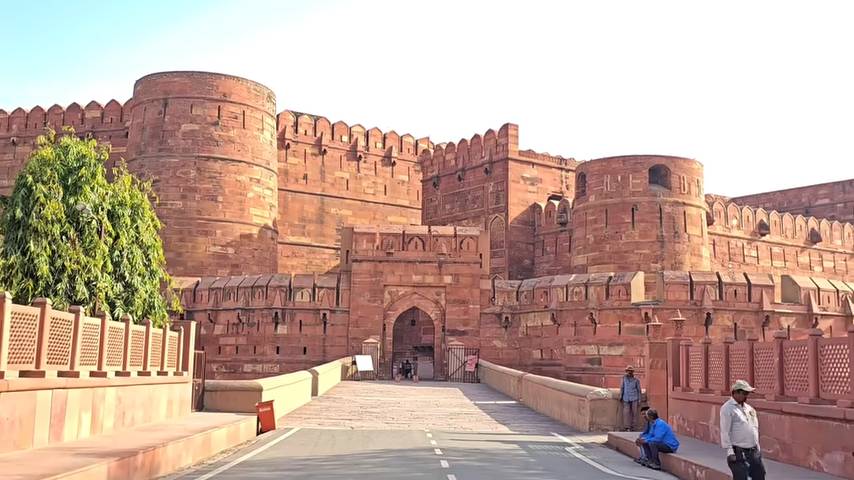When most people think of Agra, the majestic Taj Mahal instantly comes to mind — and rightfully so. As one of the Seven Wonders of the World, it draws millions of visitors every year. But just a short distance away lies a lesser-known yet equally fascinating monument: the Agra Fort, a masterpiece of Mughal architecture and a treasure trove of history waiting to be explored.
A Fort That Stands Tall in Mughal Legacy
Agra Fort is the second most visited attraction in the city, and for good reason. Recognized as a UNESCO World Heritage Site, this massive red sandstone fortress offers a stunning example of Indo-Islamic architecture. While many forts across India have grand tales to tell, Agra Fort’s legacy stands out for its imperial significance and intricate design.
Reimagined by Shah Jahan in White Marble
Though the fort existed before his reign, Emperor Shah Jahan, who adored white marble, ordered major renovations. He replaced several original structures with marble-clad designs, many of which still shine with elegance today. His love for beauty is etched in every corner, making the fort a visual delight.
A Blend of Cultures: Temples Within the Fort
While Islamic architecture dominates the fort, a lesser-known fact is the presence of Hindu temples inside its walls. This cultural blend reflects the inclusive vision of Emperor Akbar, who had Hindu temples constructed for his wife, Jodha Bai, a Hindu Rajput princess. It’s a beautiful reminder of the religious harmony encouraged during his reign.
Ingenious Defense: A Sloped Entry and Boiling Oil
The southern entrance of the fort reveals a sharp 60-degree slope — a strategic design to prevent enemy elephants and cavalry from storming in. To reinforce this defense, boiling oil was poured down from the gates during invasions, showcasing the advanced military architecture of the Mughal era.
Built with Over 4,000 Sandstone Blocks
The fort’s iconic red walls were constructed using more than 4,000 premium sandstone blocks, transported from quarries across North India. This vision belonged to Emperor Akbar, who preferred red sandstone for its strength and royal appeal.
The Stolen Throne and the Legendary Kohinoor
One of the fort’s most valuable possessions was the Peacock Throne, once studded with the legendary Kohinoor diamond. However, during the decline of the Mughal Empire, Persian invader Nadir Shah looted the fort and took the throne, beginning the long journey of the Kohinoor out of India.
Architectural Wonders Inside Agra Fort
Agra Fort is home to several remarkable structures that continue to captivate tourists:
- Sheesh Mahal – A royal dressing room adorned with thousands of tiny mirrors
- Moti Mahal, Khas Mahal, and Jahangir’s Palace – Each with its own historic and architectural significance
- Musamman Burj – The octagonal tower where Shah Jahan spent his final years, gazing at the Taj Mahal across the river
- Nagina Masjid – A delicate private mosque for the royal ladies
The Sheesh Mahal, in particular, is a standout — the mirror work here is so fine that even a single candle can light up the entire room.
Fascinating Facts About Agra Fort
- It served as the main residence of the Mughal emperors until 1638.
- The fort is just 2.5 km from the Taj Mahal, making it a convenient next stop.
- It was originally built over the site of Badalgarh Fort, a mud-brick structure from the 11th century.
- Sikandar Lodi, a Sultan of Delhi, once ruled from here, and even died within its walls.
- Akbar later rebuilt the fort using red sandstone, laying the foundation for its present grandeur.
- Shah Jahan, ironically, was imprisoned in this very fort by his son Aurangzeb.
Visitor Information
Agra Fort is open to tourists every day from 7:00 AM to 6:00 PM. The entrance fee varies for Indian and foreign visitors. Its proximity to the Taj Mahal makes it an ideal addition to any Agra itinerary.




